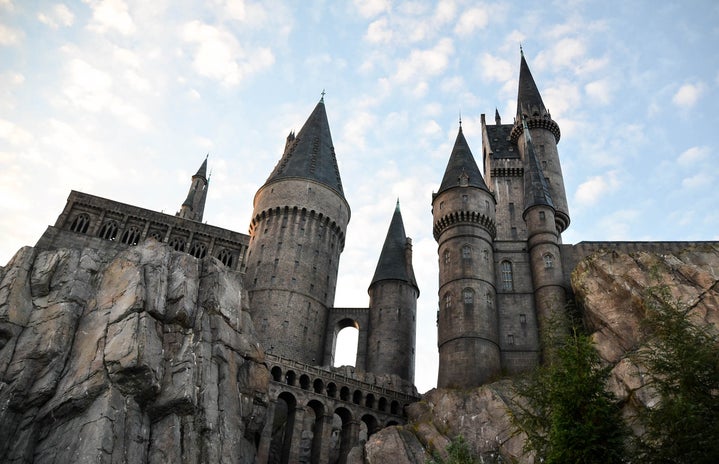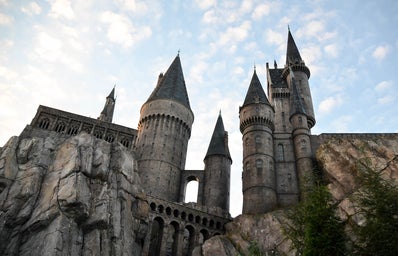Scotland has long been known as a country full of mythos and magic. Any country whose national animal is a unicorn almost has to be. Ask anybody — you’ll hear old tales of the Loch Ness Monster hiding deep in Loch Ness, dragons terrorizing the locals, and maybe even a fairy or two wandering around the northern glens. With the spooky season at its zenith, there’s no better time to dive into the wide mythos of Scotland.
Samhain (pronounced sah-win)
Ever wondered where Halloween comes from? One of the four traditional Gaelic festivals throughout the year, Samhain marked the end of the harvest season and the beginning of the winter months from sundown on October 31 into November 1. Also known as Féile na Marbh, the Feast of the Dead, Samhain was a threshold festival, and it was thought you could make contact with the fairies due to the thin barrier between our world and the Fairy Realm. Bonfires contained healing powers, and ancient burial mounds became portals to the Fairy Realm. Samhain remains important in Scottish folktales like Finn McCool, Tam Lin, and many others. Over the centuries, Samhain became our modern Halloween, but its roots are all Gaelic!
Kelpies
The Loch Ness Monster might be Scotland’s most well-known and mysterious creature, but have you heard of kelpies? Like Nessie, the incredibly strong kelpies traditionally haunt lochs and sometimes rivers. They appeared as horses but can assume human form when they chose. Don’t hop on a kelpie’s back, or you might find yourself at the bottom of a watery grave. You can visit the Kelpies sculpture in Grangemouth, Scotland to experience a more modern (and less dangerous) version. I’ve only seen them in passing, but they’re absolutely massive in person!
Scottish Standing Stones
Standing stones, much like England’s Stonehenge, are circles or groups of tall stones thought to be related to pagan social gatherings, worship, or burials. Some of these stones are believed to be 5,000 years old and contain vast amounts of unknown history. The Calanais Standing Stones on the Isle of Lewis, Machrie Moor Stones on the Isle of Arran, the Ring of Brogdar and the Standing Stones of Stenness Orkney, Clava Cairns in Inverness, and Kilmartin Glen in Oban are all incredible Neolithic sites. Unfortunately for Outlander fans, Craigh na Dun isn’t an actual standing stone site, but can you guess which standing stones it’s based on?
Selkies
A popular legend out of the Shetland and Orkney Islands is that of the selkies, mythical beings that are able to transform from seals into humans, leaving their sealskin behind like a coat when they reach land. Think of them as the mermaids of Scotland. Legend says that if you steal a selkie’s coat, you gain power over them, but they will always long to return to the sea.
Will-o’-the-Wisps
As seen in Pixar’s Brave, will-o’-the-wisps are tiny spirit lights typically found in forests and bogs. Often attributed to goblins or fairies, these mysterious lights fool travelers into following the wrong path to somewhere sinister, like a cliff’s edge. Science has since come up with an explanation for the wisp phenomenon, but it’s much more fun to believe they’re fairy lights.
Arthurian Legend
As a medievalist, I am a bit obsessed with Arthurian legend. While King Arthur and his knights mostly have ties to England or Wales, a few central characters hail from Scotland. Knights Gawaine, Agravaine, Gareth, and Gaheris were raised in Orkney as princes of the islands. The villainous Mordred was also raised in Orkney by Arthur’s sister Morgause. While the mythical city of Camelot remains a mystery to maps everywhere, some Scottish hopefuls speculate that Camelon in Stirlingshire could be the city’s original location.
Isle of Skye
One of Scotland’s most popular destinations, the Isle of Skye, is home to many mythical attractions. It’s been on my list to visit for ages! From the vividly blue Fairy Pools to the Old Man of Storr, a towering rock formation thought to be the remains of one of Skye’s native giants, there’s a story under every rock and tree. The Macleod family holds the Dunvegan Castle’s Fairy flag, a gift from a fairy princess who married into their family centuries ago. Legend says that the flag’s protective spell still covers the clan.
Between the highlands, lowlands, and islands of Scotland, there are a plethora of fascinating tales and locations. Take this as your sign to explore the local history next time you’re out and about in the hills and glens. Watch out for mischievous creatures, don’t follow any strange lights around standing stones, and shout if you see Nessie swimming in a loch!


